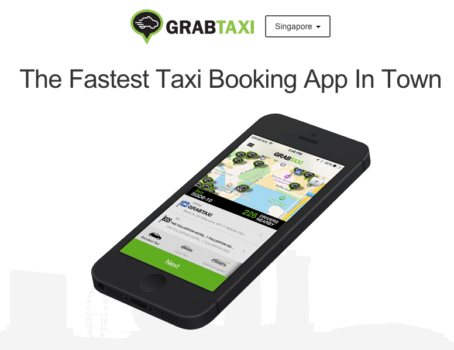GrabTaxi Calls for Programmatic to be Demystified

Programmatic may provide great benefits for brands, but it is still a fledgling industry and one that needs to be further simplified so marketers can better understand its inner workings.
Cheryl Goh, global vice president of marketing for GrabTaxi, urged for more case studies and industry benchmarks so more could be understood about the RTB platform.
The taxi booking company took its first steps into programmatic a few months back, tapping the tool to purchase downloads as part of a promotional campaign as well as to support its regular marketing efforts.
So far, the results have been very promising, said Goh, who is based in Kuala Lumpur.
"When you think about it, it does make sense. It serves ads that are time-sensitive," she told ExchangeWire in an interview. "We try to serve relevant messaging to the right consumer and at the right time. That's basically what we're using programmatic for. We're tracking the results and comparing the effectiveness between normal and programmatic buys, and it looks good so far."
She noted, however, that GrabTaxi taps non-programmatic tools for volume buying, which drives up the overall cost for media buying on these platforms. So, it may not be a fair apples-to-apples comparison in terms of cost-performance, she said.
Goh added that the programmatic industry in the region is still fledgling and few brands have tried it at a large scale. "It'll be nice to talk to someone who has done this so we can gain some experience," she said.
She also emphasised the need to break down the complexities so the technology can be more easily understood.
"For one, the name is so not sexy!" she laughed. "More importantly, the industry needs to demystify programmatic. When online advertising first came up, it was pitched as the measurable form of marketing and that was something we all understood."
"The thing about programmatic is that, of course there's a lot of technology involved that makes it powerful and what it is today. But, for a traditional marketer, that can be daunting to understand," she noted. "The challenge with programmatic also is that it's still so new."

Cheryl Goh, GrabTaxi
For GrabTaxi, the fledgling platform will remain on a testbed until there is sufficient data to determine its effectiveness. If it continues to produce positive results, the company will ramp up its deployment and adopt it on a larger scale.
"What programmatic promises is more efficient cost of acquisition. Anything that helps drive down our cost of acquiring an actual using customer is something we're very excited and view as the main benefit," Goh said.
"If it brings benefits against the other channels, we'll weigh our media budget accordingly-- though, of course, we'll keep a certain budget for activities around exposure and brand building. If programmatic does really well for us, I don't see why we shouldn't spend more in terms of boosting our media performance."
Specialist help needed when programmatic scales
Also, when it does decide to scale up its deployment, GrabTaxi will likely reach out to agencies for guidance. It currently manages 90% of its marketing activities in-house.
Some external help will be necessary as the company expands, Goh said, noting that it will probably engage a specialist agency to support its programmatic deployment, especially since the technology is new for the company.
She also highlighted the need for more industry benchmarks to help her better decide which tools are most effective in supporting various campaigns.
"Right now, when it comes to digital marketing, we're confronted with so many options … and it can be overwhelming to evaluate the different services. There needs to be some kind of benchmark for standards that focus beyond award wins and standard KPIs," she explained. "I want to know how many 'likes' gained in a campaign were actually effective, compared to the amount of investment that went into it."
She underscored the need for more case studies; although she acknowledged that meant the advertiser or agency would need to be open about sharing more information beyond the basic facts and figures.
For now, word of mouth has proven to be the most effective marketing tool for the taxi booking service; so GrabTaxi focuses much of its efforts to amplify this and ensure good customer experience, Goh said. This means spending time vetting and training its drivers, and ensuring there are processes in place to exceed user expectations, such as, sending a replacement driver as soon as the first fails to show up for the booking.
Social media can also impact word of mouth, so considerable effort is dedicated to monitoring and responding to comments as well as complaints made via these platforms, she said.
GrabTaxi currently has presence in 20 cities across six Southeast Asian countries, including Singapore, Malaysia, Thailand, and Indonesia. Its network comprises 75,000 vehicles across the region and its booking grew 10-fold last year to clock seven bookings per second. Its app has reached 3.8 million downloads.
The company collects a fee for every successful booking. In Singapore, this accounts for 30 cents of every successful transaction.
Just this week, it opened its first research and development (R&D) facility in the island-city, which will focus on analysing data and identifying trends from multiple data sources. The US$100 million Singapore center is the company's first technology hub and eventually will be supported by 200 data scientists and engineers.
AdvertiserAgencyAnalyticsAPACBrandingDataDigital MarketingMeasurementMedia SpendProgrammaticSingaporeTargeting








Follow ExchangeWire